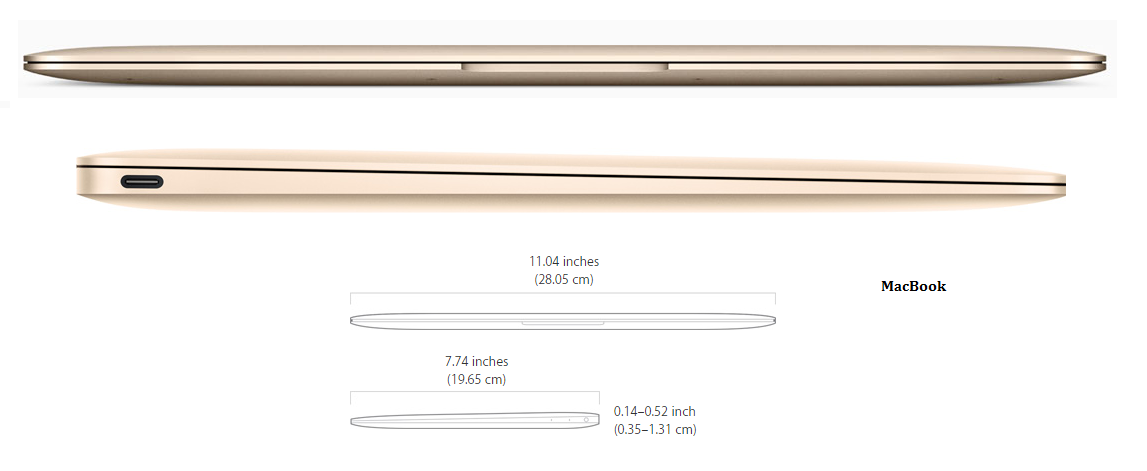Apple has been leading the charge in the design of laptops for a few years now. There has, however, been a steady decline in laptop demand, partly due to new developments in smartphone and tablet technology. Apple has tried to incorporate more smartphone and tablet features into this new laptop in order to reverse the current trend in declining sales.
The announcement of the new line of Apple watches was accompanied with the introduction of the new MacBook – which stole the show. This is the first new MacBook in 4 years, with the previous version released in 2010. One of the best features of the new MacBook is the fact that it weighs only 0.91Kgs. The MacBook has entered the league of the lightest laptops available, with competitors such as the Lenovo LaVie HZ550 weighing 0.78Kg and Dell Xps weighing 1.34Kg.

The MacBook is not only lighter, but also more energy efficient than its predecessors, with a battery that will last up to 9 hours on a single charge. This is due to the new Intel Core M processor which is highly energy efficient and runs cooler, resulting in less energy being wasted on cooling. As a result of the new processor, the MacBook is fanless! This helps increase power efficiency of the new MacBook, while at the same time reducing the weight and size, making it more portable
The increased portability of the laptop, however, comes at a great cost. The Intel Core M processing power is quite low, although very energy efficient. In comparison, Dell and Lenovo laptops sporting the new 5th generation Intel i5 Core processor leave the MacBook with no chance of competing in performance.
Though it may not have the best performance, Apple has always been known for their innovative designs and for improving functionality of their products. The keyboard has been redesigned in order to keep its sleek physique while ensuring keyboard functionality. The keyboard has been changed to a butterfly switch, which allows for thinner design. Though the new keyboard design allows for thinner build, Apple has managed to keep the responsiveness and the feel of the keyboard quality intact.

Not only has the keyboard been redesigned but the trackpad too. It now has 4 sensors which detect how much pressure is applied. This allows for a new function dubbed “Force-click”. Applying pressure on the trackpad unlocks new capabilities such as looking up definitions or searching something in Wikipedia. This new function is said to be very useful and will be integrated into several new apps, but will take some getting used to. The MacBook has a full metal enclosure which keeps the theme of a sleek design. The LED apple logo on the back has been removed and replaced by an embedded logo as seen on iPad and iPhone products, giving further energy efficiency. Furthermore, the new MacBook is released in three colours: gold, silver and space grey, which is yet another example of unifying their design philosophy.

Besides the light weight and small size, the other most noticeable change on the new MacBook is the adoption of only one port. This port known as a USB-C can be used for charging, video outputs and downloads. This port moves forward into an age where all accessories are wirelessly connected, however if you aren’t ready to move into this new era, the MacBook may not be for you.
If the wirelessness of the MacBook doesn’t deter you, the new features will astound you. The MacBook has been equipped with a Retina display and 2304 x 1440 resolution. This display, combined with battery efficiency and functionalit,y ensures that you are able to use it all day to work or to play. The MacBook is set to be launched on the 10th April 2015, with everyone waiting in anticipation.









